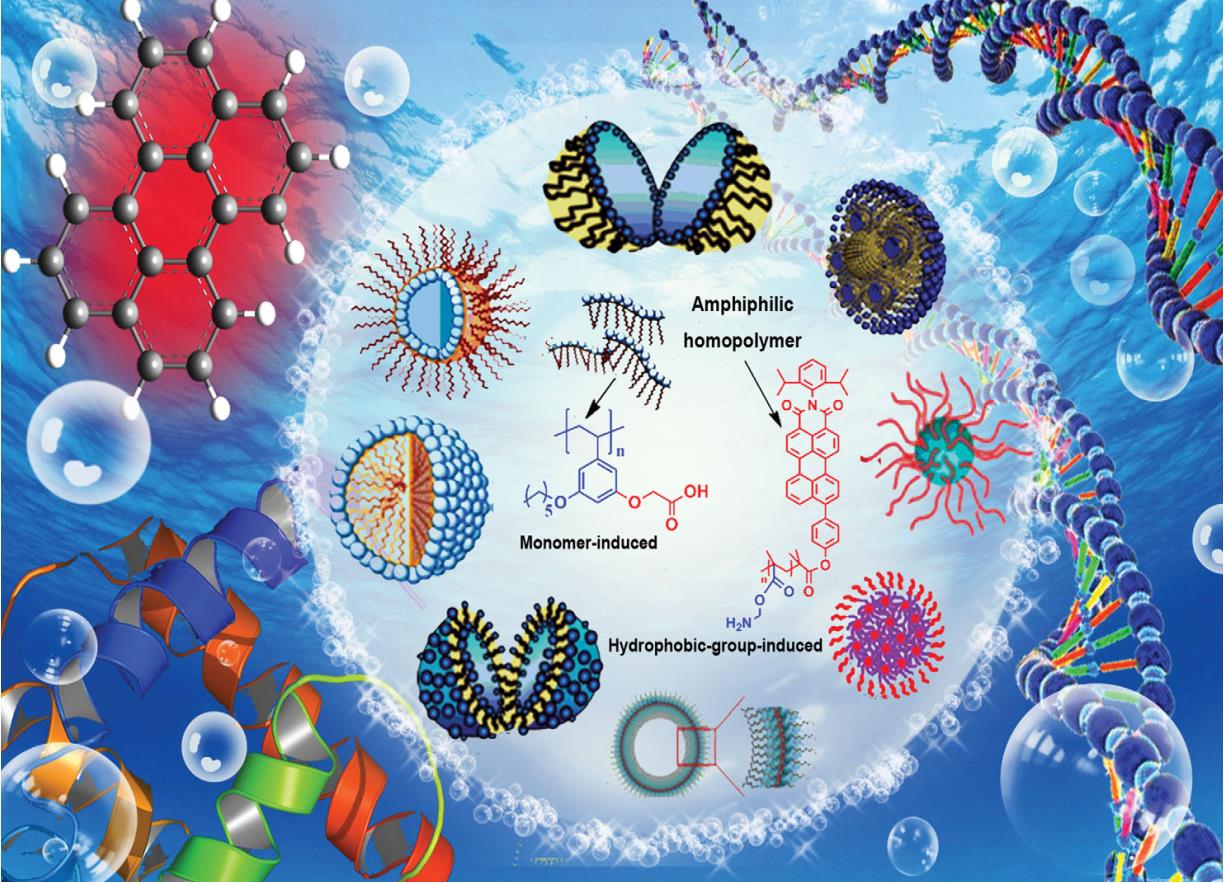
Abstract: The need for a simplified access to supramolecular assemblies with enhanced tenability has led to thedevelopment of amphiphilic homopolymers (APHPs). This feature article highlights recent advances and future trends in APHP design, self-assembly, and biomedical applications. APHP self-assemblies are prepared by two different routes: the ‘‘monomer-induced’’ method, which polymerizes functional amphiphilic monomers into micelles and inverse micelles, and the ‘‘hydrophobic-group-induced’’ method, which uses the non-covalent interaction provided by large hydrophobic endgroups. Special emphasis is paid to unimolecular polymeric micelles (UPMs) which are formed from core–shell APHPs and which consist of a hydrophobic/hydrophilic core coated with a polymer shell. The self-assembled supramolecular structures hold promise for various biomedical fields, including living cell transport, fluorescence labelling, protein sensing and extraction, DNA detection, and drug loading and release.
